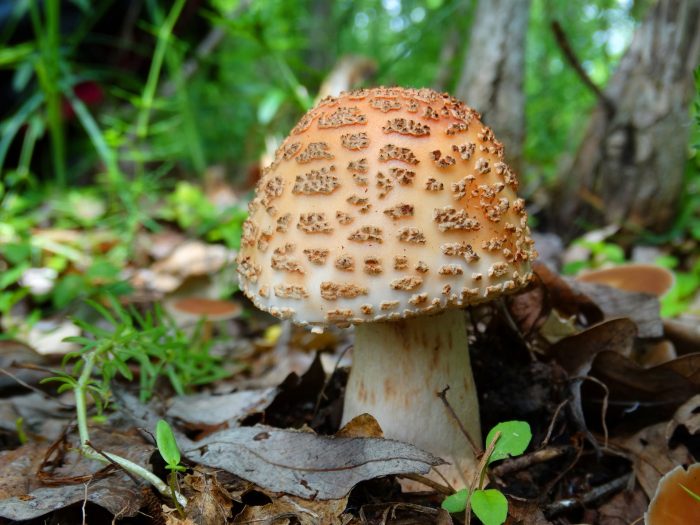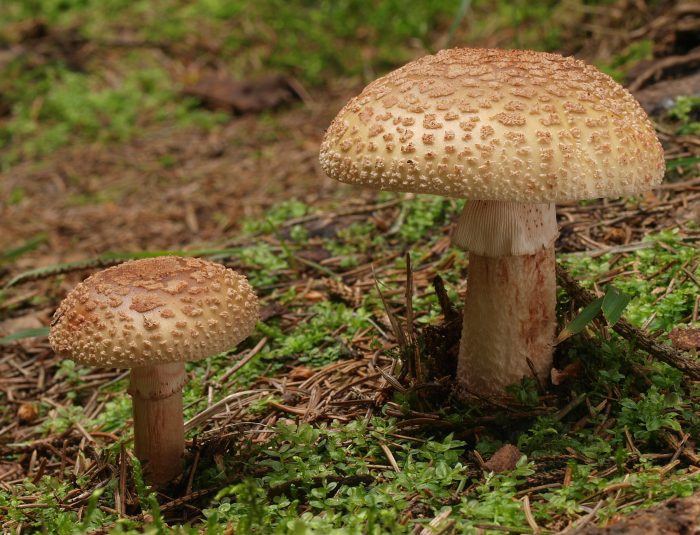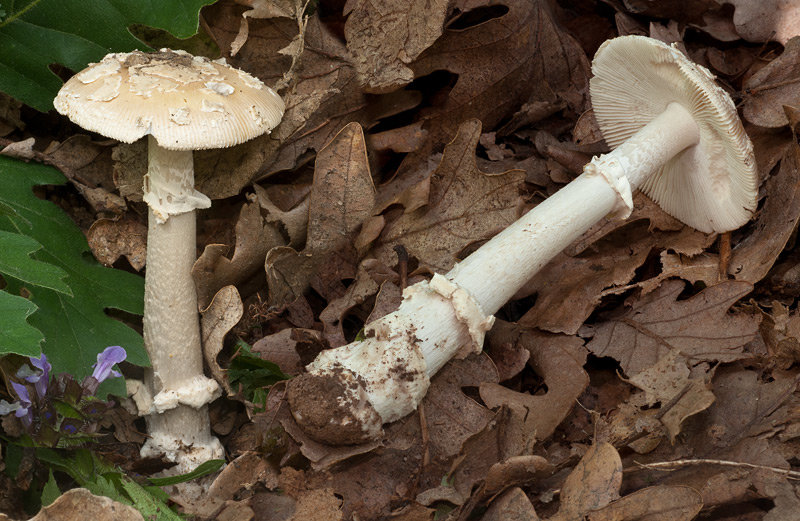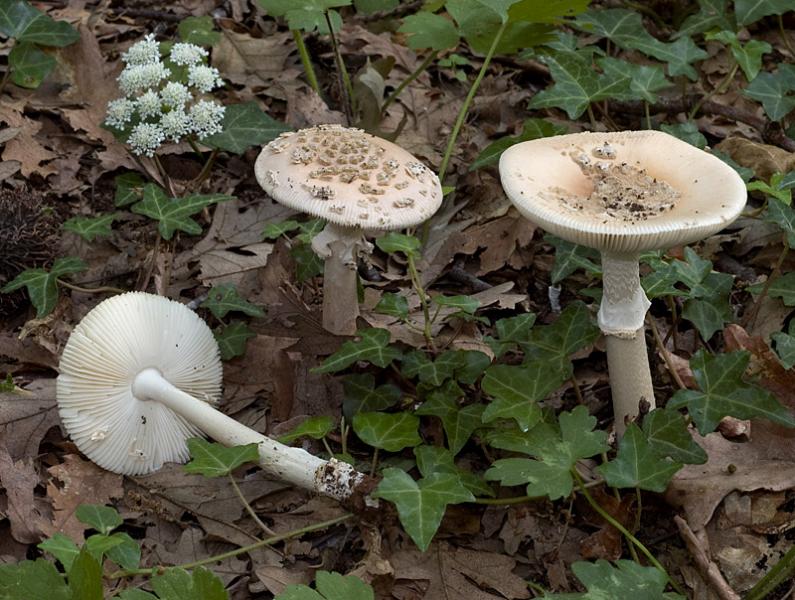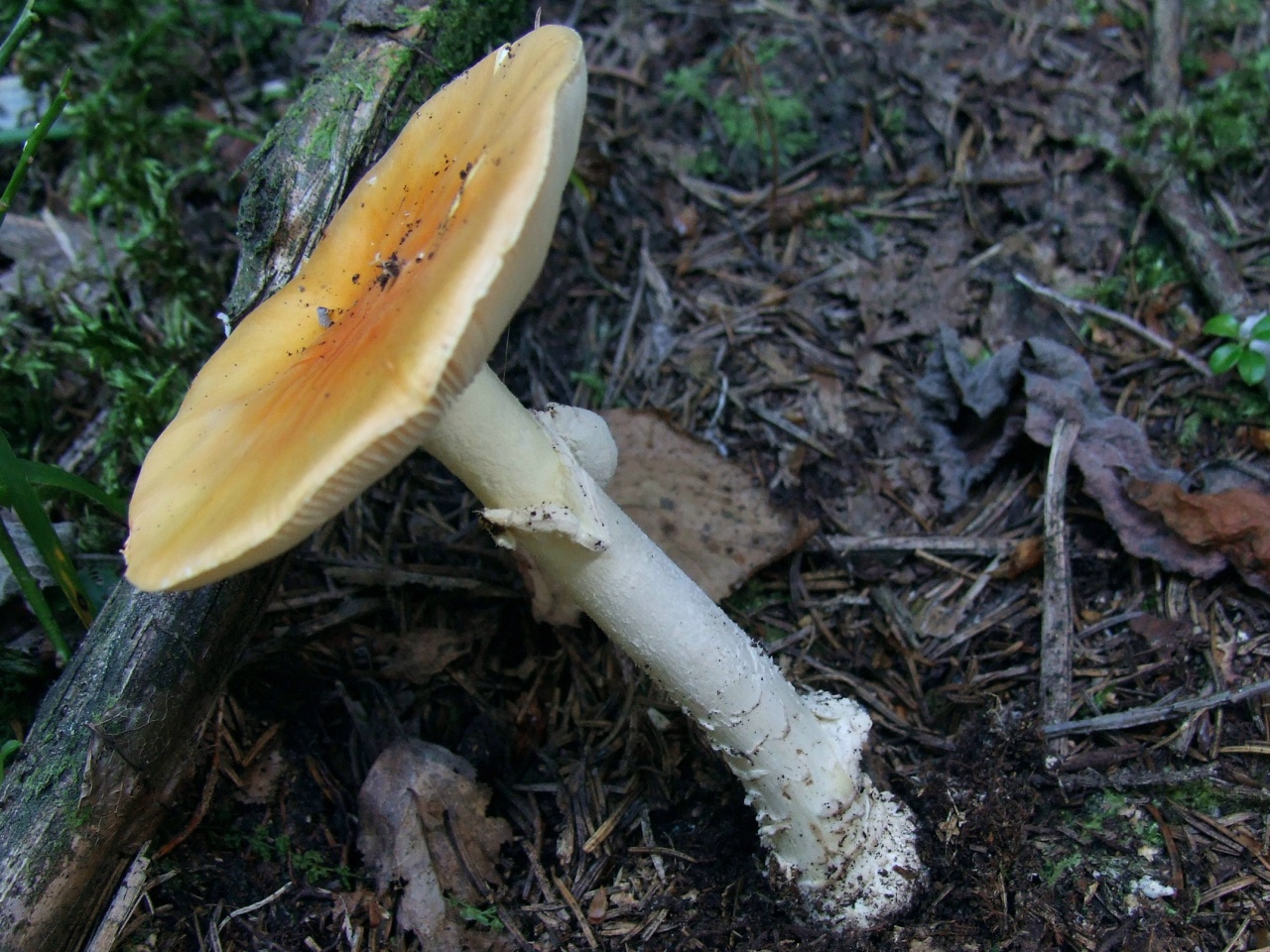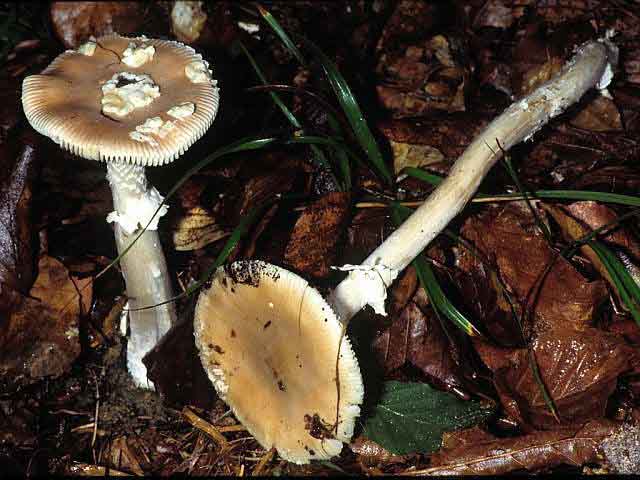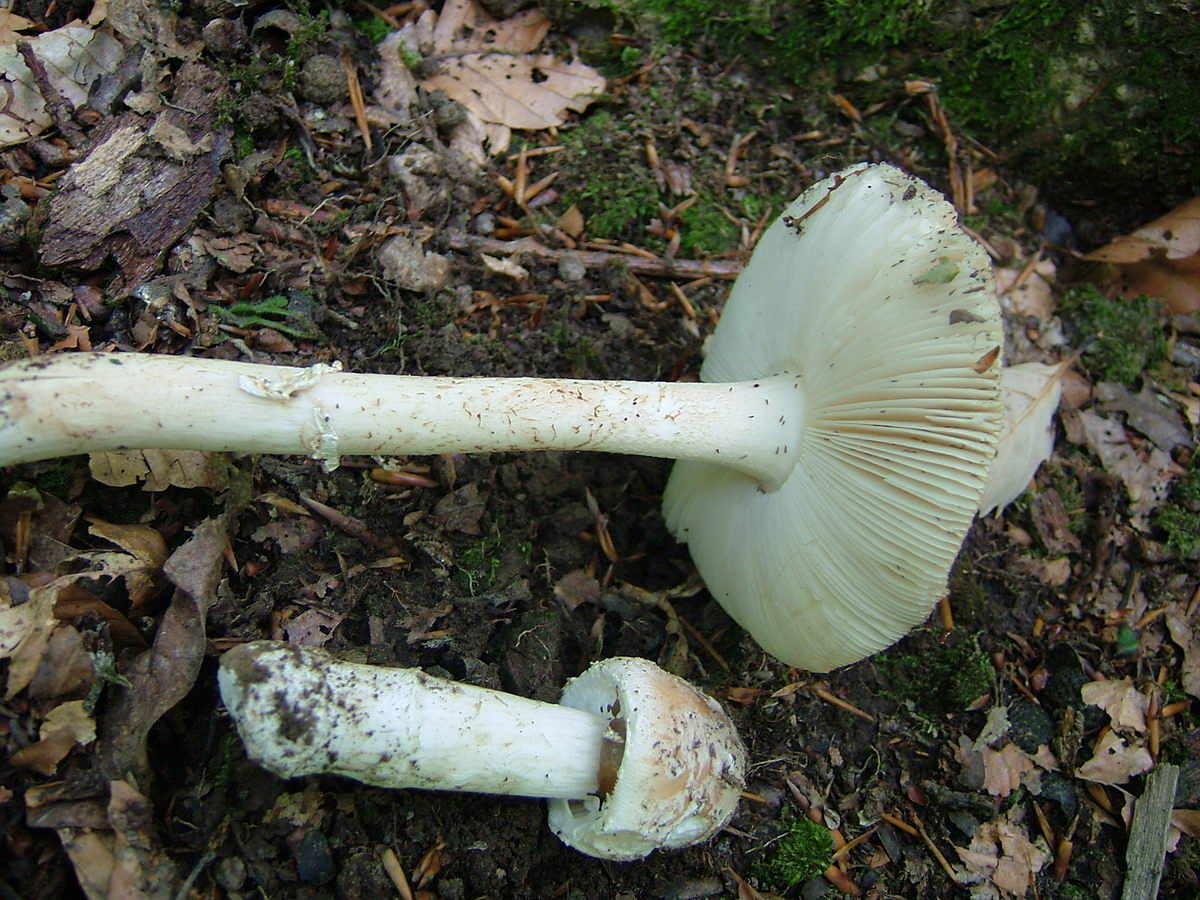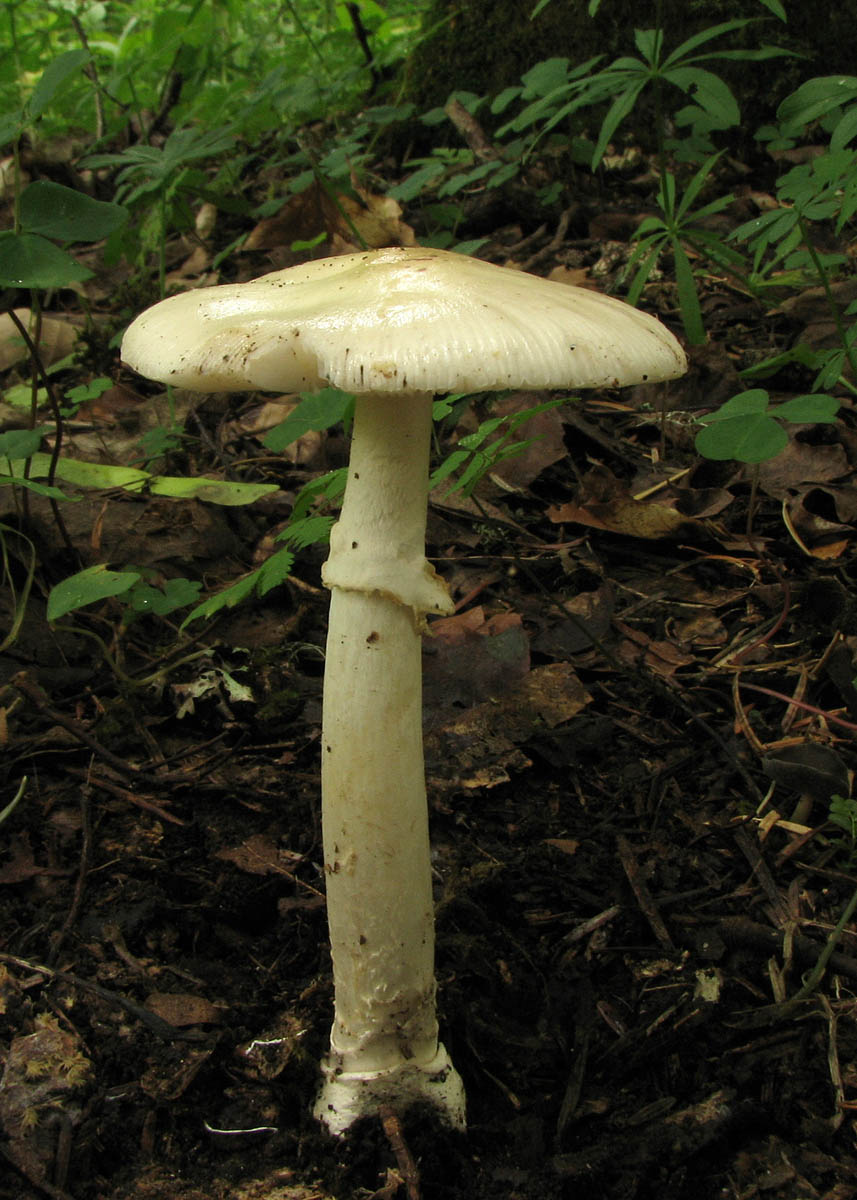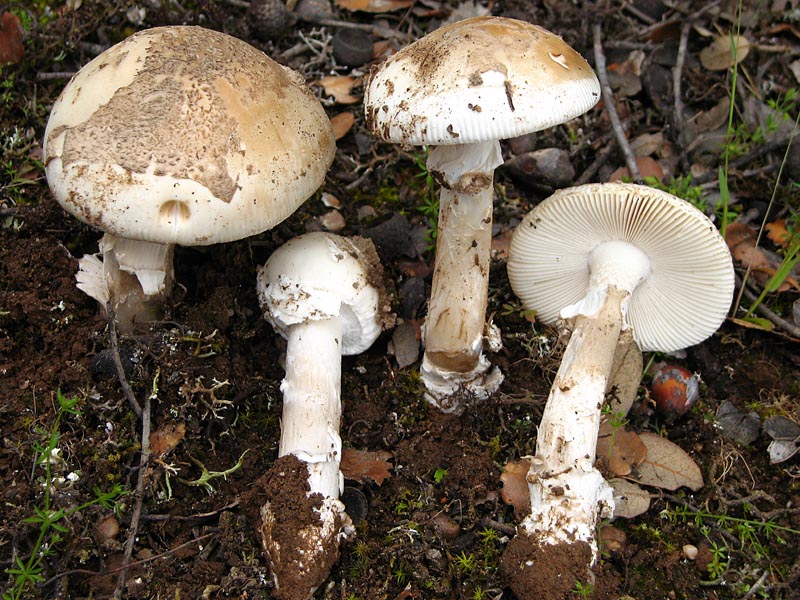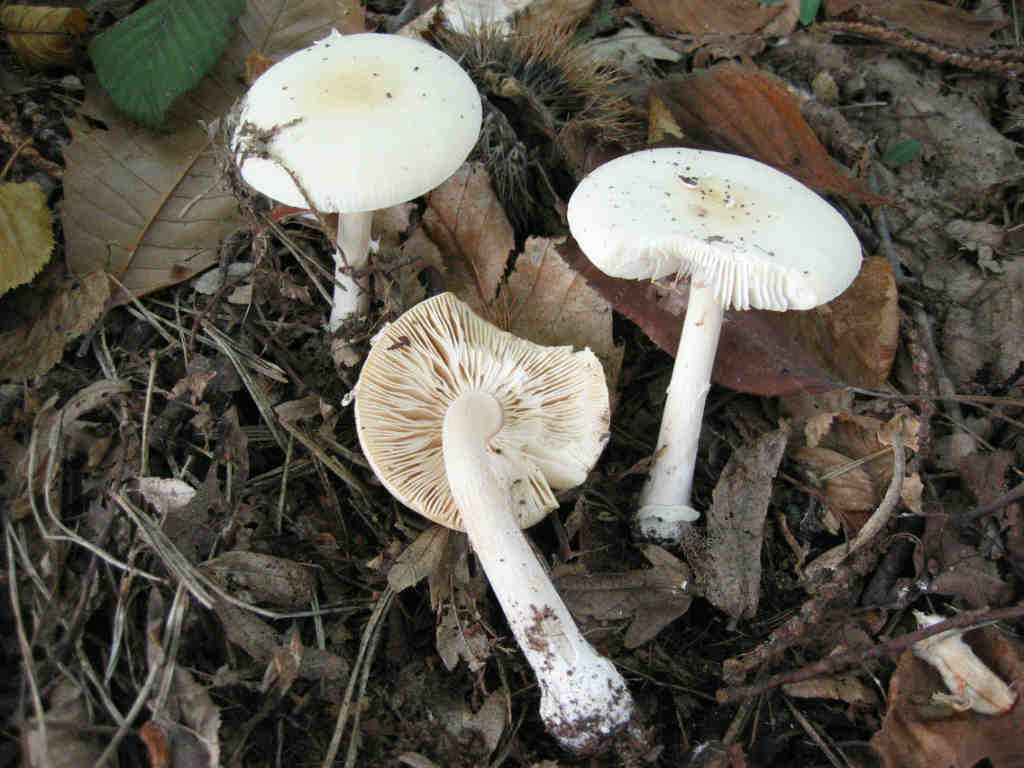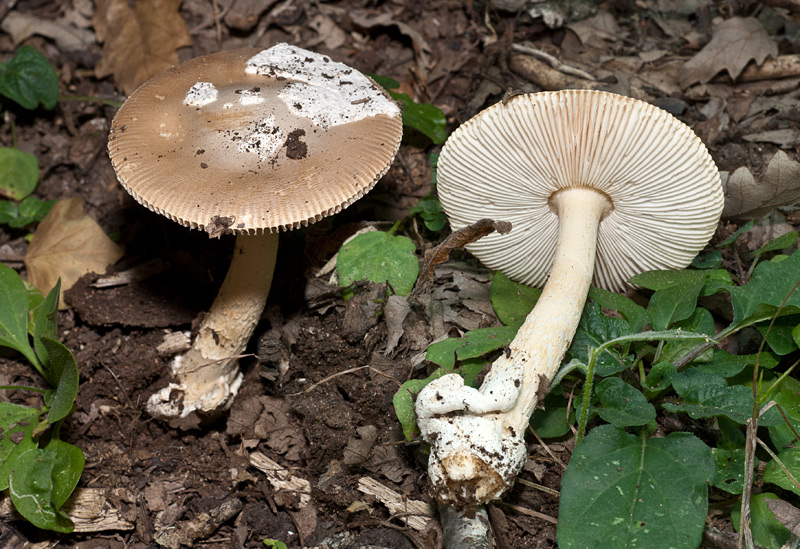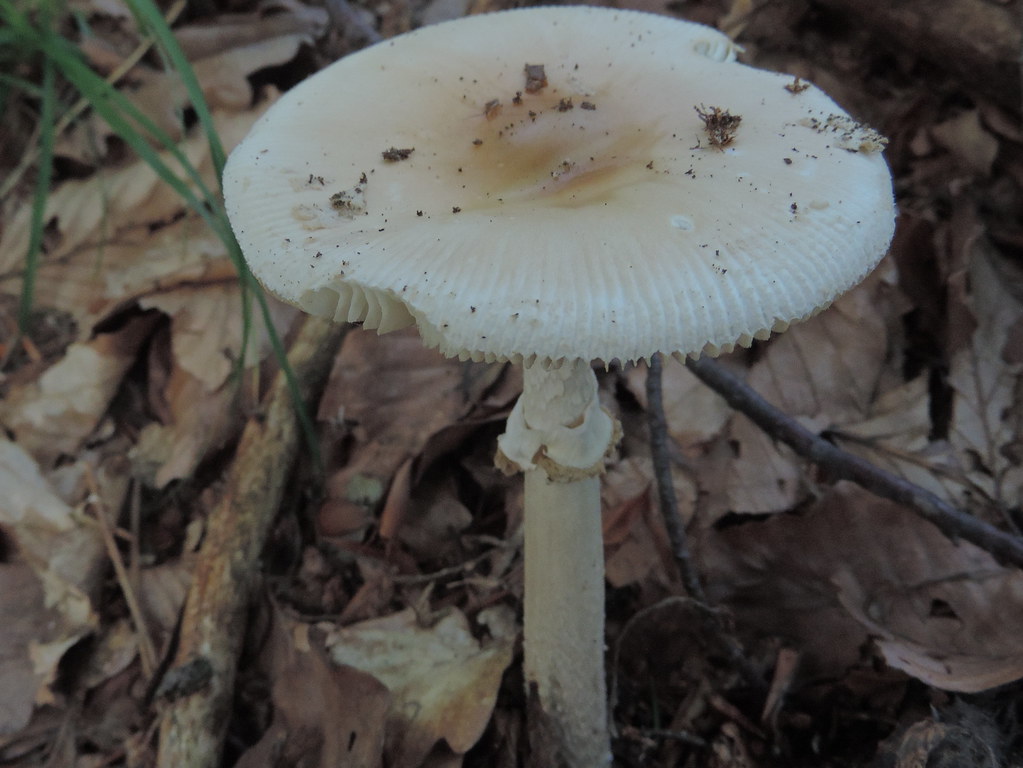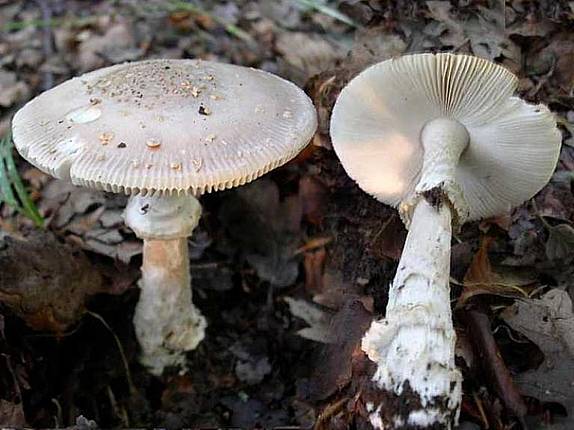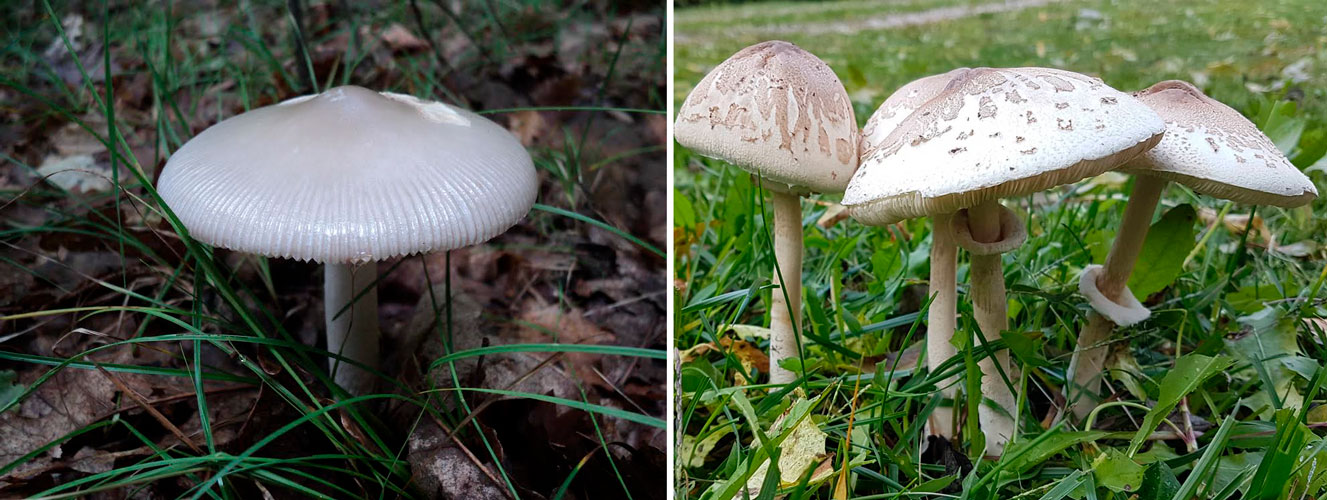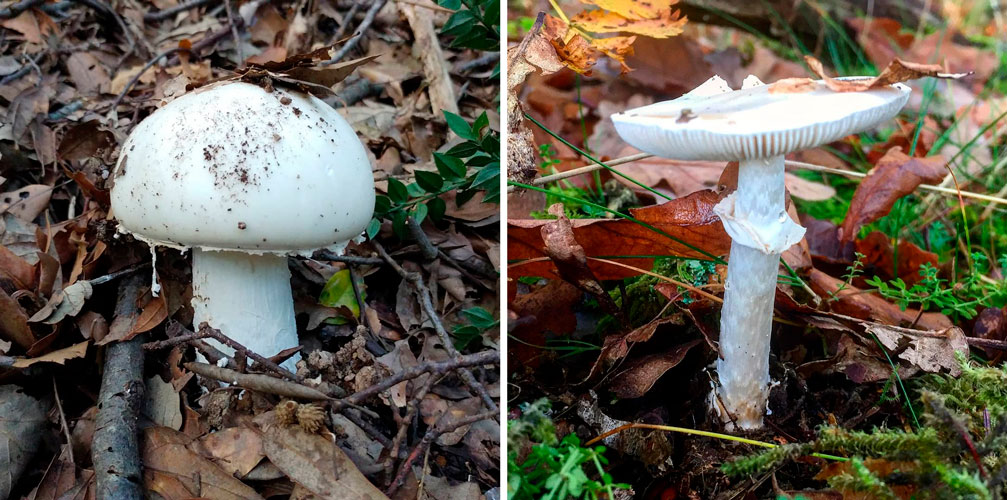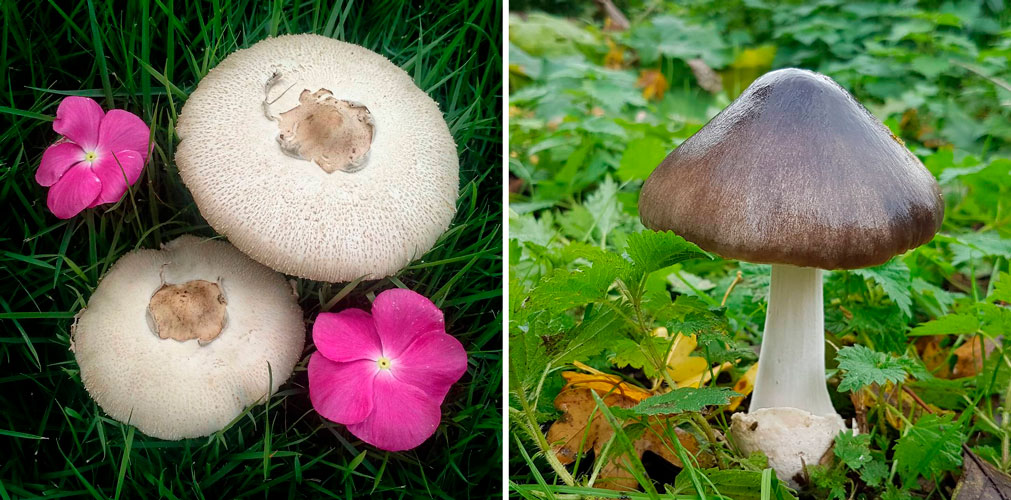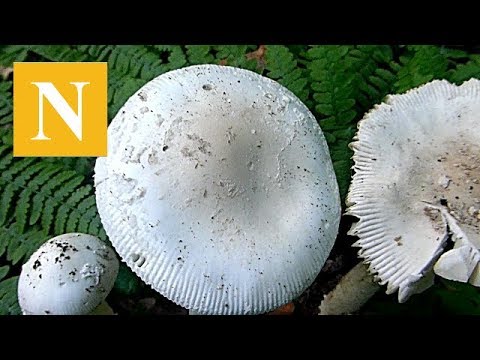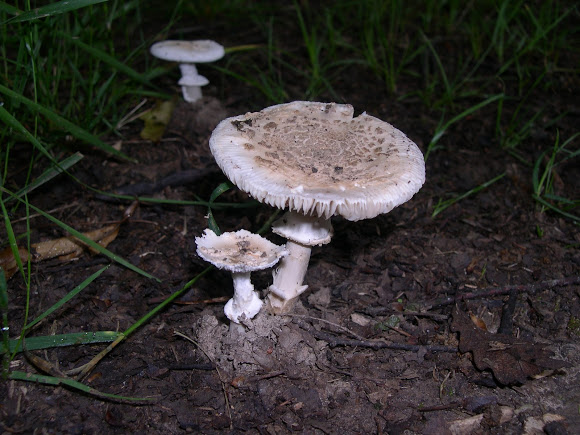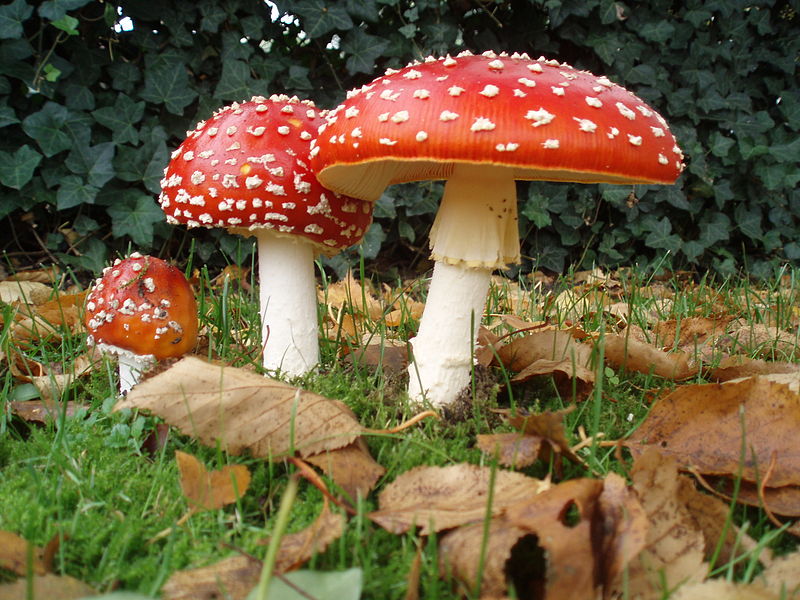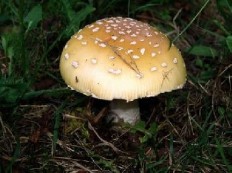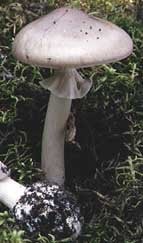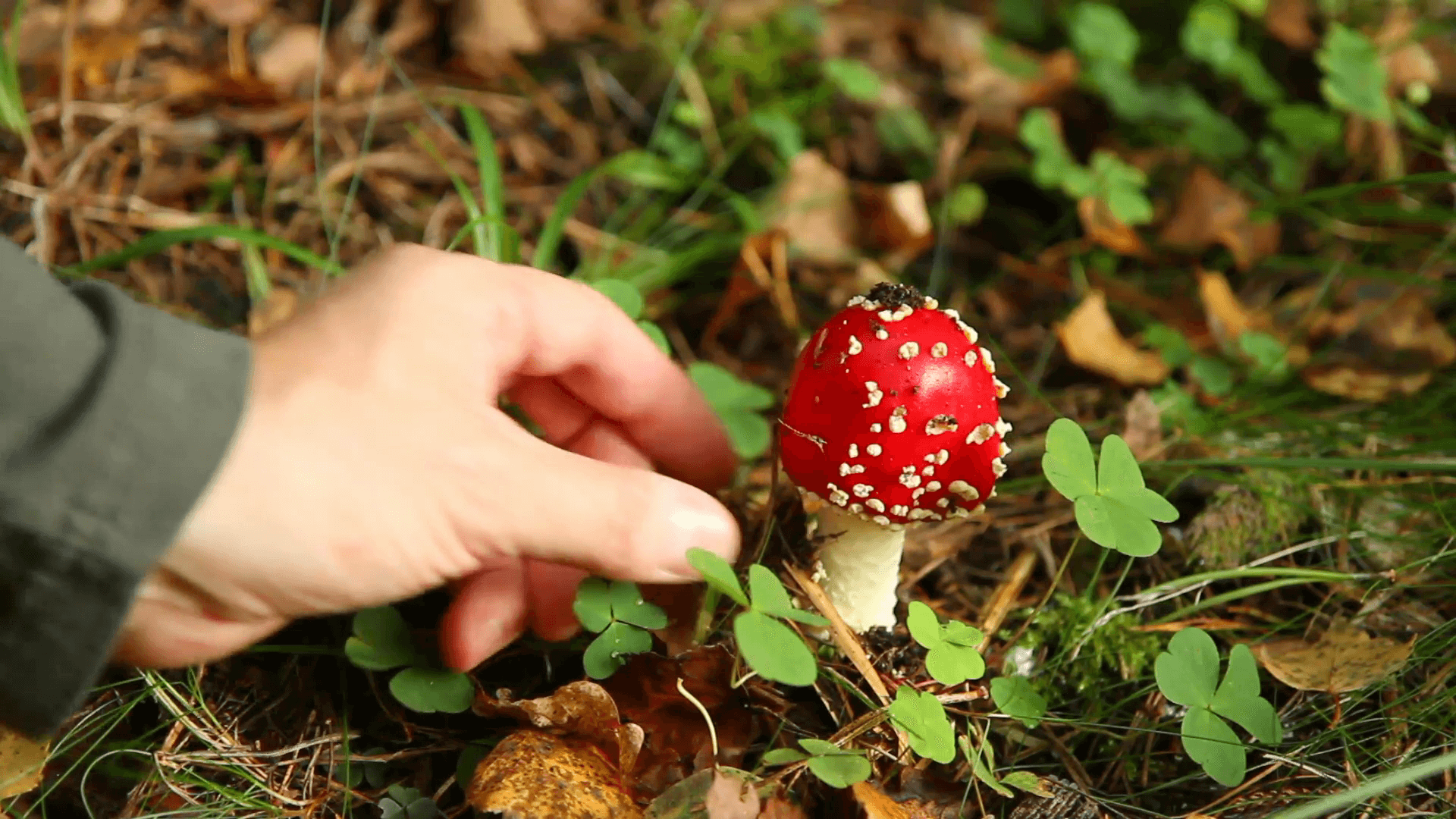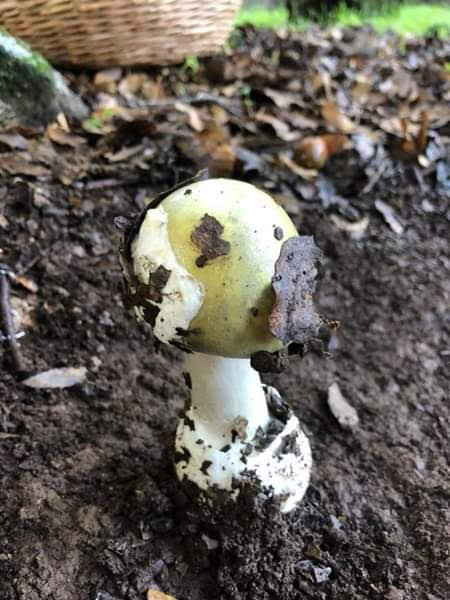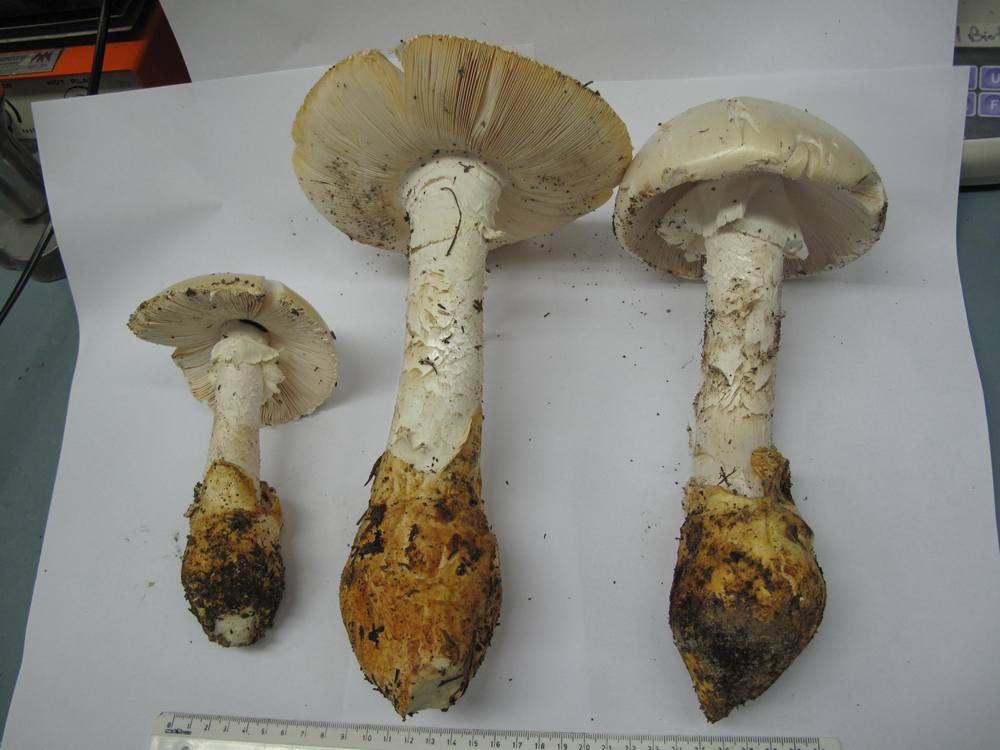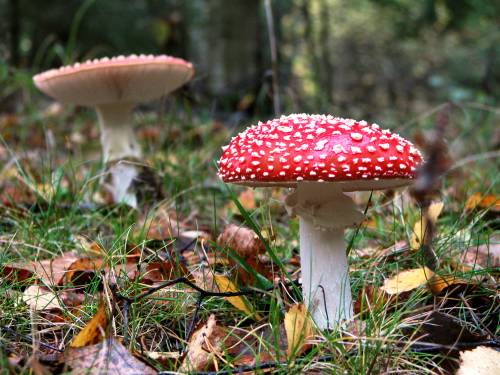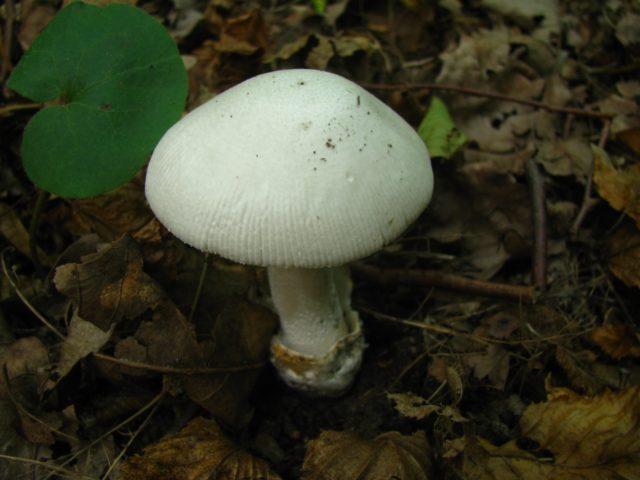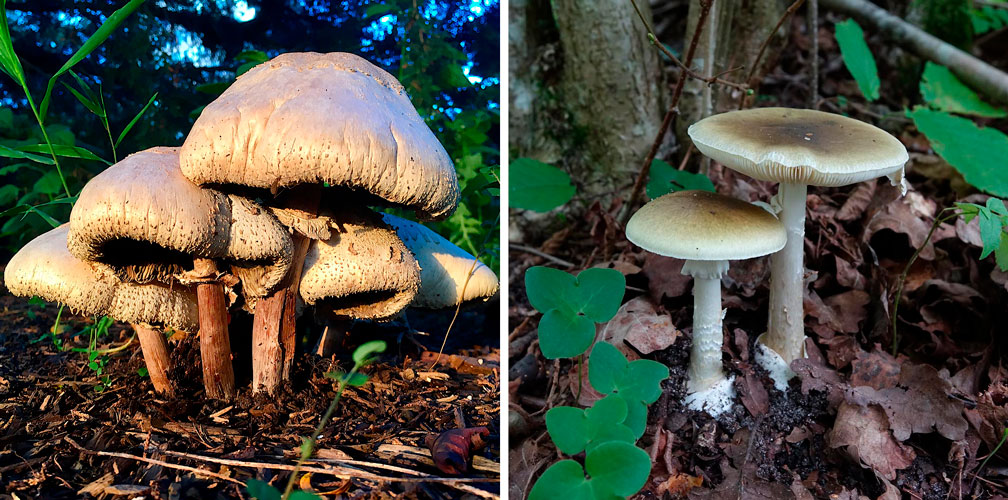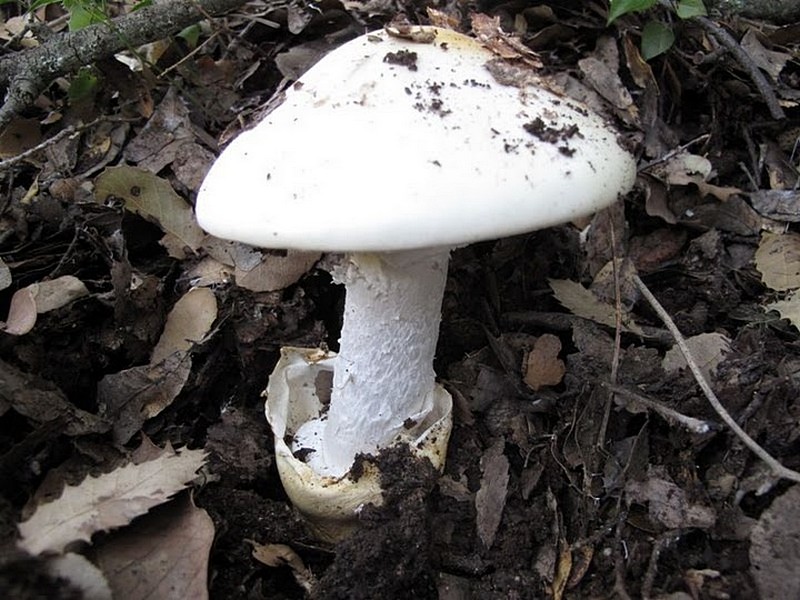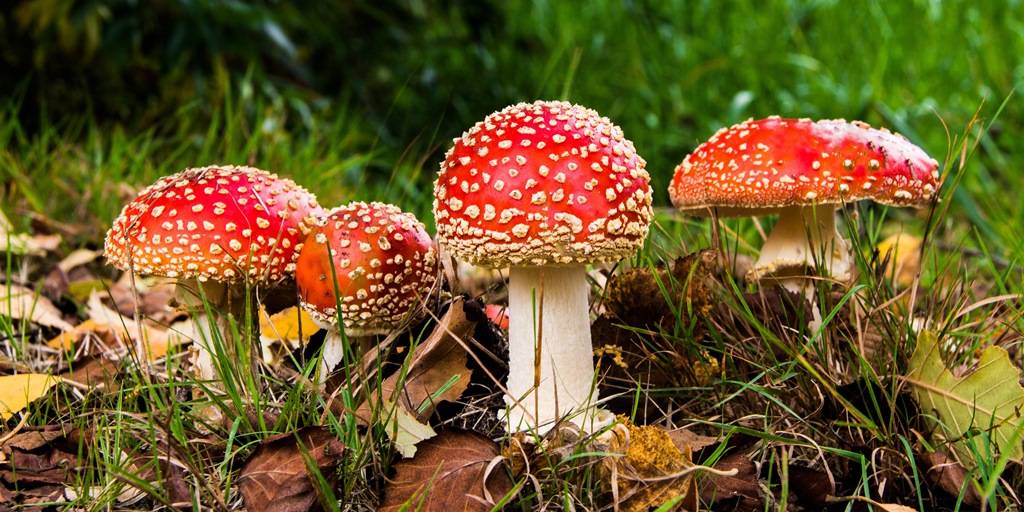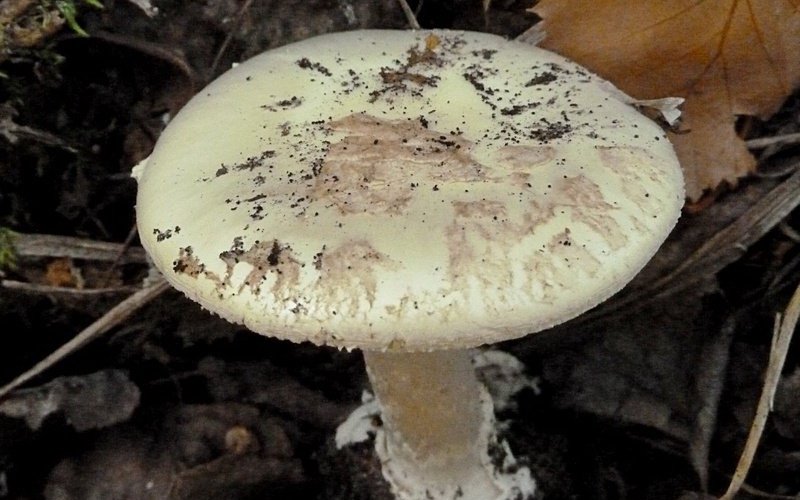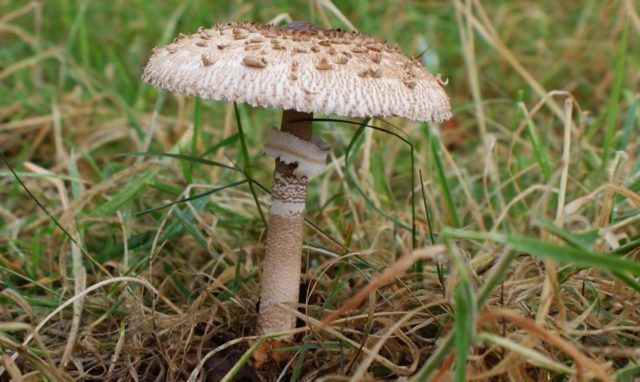Caesar mushroom (Amanita caesarea)
Other names:
Description:
The cap is 6-20 cm in diameter, ovoid, hemispherical, then convex-outstretched, orange or fiery red, yellowing with age or wilting, naked, less often with large white remnants of a common veil, with a ribbed edge.
The plates are loose, frequent, convex, orange-yellow.
Spores: 8-14 by 6-11 microns, more or less oblong, smooth, colorless, non-amyloid. Spore white or yellowish powder.
The leg is strong, fleshy, 5-19 by 1.5-2.5 cm, clavate or cylindrically-clavate, from light yellow to golden, in the upper part with a wide hanging ribbed yellow ring, near the base with a saccular free or semi-free white Volvo. The peeking Volvo has an uneven lobed edge and looks like an egg shell.
The pulp is dense, strong, white, yellow-orange in the peripheral layer, with a faint smell of hazelnut and a pleasant taste.
Spreading:
Occurs from June to October in old light forests, copses, forest growths, on the border of deciduous forests and meadows. Traditionally grows under chestnuts and oaks, less often - in the neighborhood of beech, birch, hazel or coniferous trees on acidic or decalcified soils, sporadically, singly.
A species with a disjunctive range. Found in Eurasia, America, Africa. Among the countries of Western Europe, it is distributed in Italy, Spain, France, Germany. On the territory of the CIS, it is found in the Caucasus, Crimea and the Carpathians. Listed in the Red Book of Germany and Ukraine.
Similarity:
It can be confused with the red fly agaric (Amanita muscaria (L.) Hook.), When the flakes from the cap of the latter are washed off by the rain, and especially with its variety Amanita aureola Kalchbr., With an orange cap, almost devoid of white flakes and with a filmy volva. However, in this group the plates, the ring and the stem are white, in contrast to the Caesar mushroom, whose plates and the ring on the stem are yellow, and only the volva is white.
It is also similar to the saffron float, but it has a whiter leg and plates.
Grade:
Exceptionally tasty edible mushroom (1st category), extremely appreciated since ancient times. Used boiled, fried, dried, pickled.
Note: Etymology: Amanita is a mushroom from Mount Amanos (Aman) in the ancient Roman province of Cilicia (Cilicia, southeast of Asia Minor, the territory of modern Turkey). Caesarea - Caesar + suffix -eus. Caesar, worthy of a Caesar (Caesar).
Definitioner
- Basidia (Basidia)
-
Lat. Basidia. A specialized structure of sexual reproduction in fungi, inherent only in Basidiomycetes. Basidia are terminal (end) elements of hyphae of various shapes and sizes, on which spores develop exogenously (outside).
Basidia are diverse in structure and method of attachment to hyphae.
According to the position relative to the axis of the hypha, to which they are attached, three types of basidia are distinguished:
Apical basidia are formed from the terminal cell of the hypha and are located parallel to its axis.
Pleurobasidia are formed from lateral processes and are located perpendicular to the axis of the hypha, which continues to grow and can form new processes with basidia.
Subasidia are formed from a lateral process, turned perpendicular to the axis of the hypha, which, after the formation of one basidium, stops its growth.
Based on morphology:
Holobasidia - unicellular basidia, not divided by septa (see Fig. A, D.).
Phragmobasidia are divided by transverse or vertical septa, usually into four cells (see Fig. B, C).
By type of development:
Heterobasidia consists of two parts - hypobasidia and epibasidia developing from it, with or without partitions (see Fig. C, B) (see Fig. D).
Homobasidia is not divided into hypo- and epibasidia and in all cases is considered holobasidia (Fig. A).
Basidia is the place of karyogamy, meiosis and the formation of basidiospores. Homobasidia, as a rule, is not functionally divided, and meiosis follows karyogamy in it. However, basidia can be divided into probasidia - the site of karyogamy and metabasidia - the site of meiosis. Probasidium is often a dormant spore, for example in rust fungi. In such cases, probazidia grows with metabasidia, in which meiosis occurs and on which basidiospores are formed (see Fig. E).

See Karyogamy, Meiosis, Gifa.
- Pileipellis
-
Lat. Pileipellis, skin - differentiated surface layer of the cap of agaricoid basidiomycetes. The structure of the skin in most cases differs from the inner flesh of the cap and may have a different structure. The structural features of pileipellis are often used as diagnostic features in descriptions of fungi species.
According to their structure, they are divided into four main types: cutis, trichoderma, hymeniderma and epithelium.
See Agaricoid fungi, Basidiomycete, Cutis, Trichoderma, Gimeniderm, Epithelium.
Fly agaric Elias, Amanita eliae
Hat: Relatively small and thin (6-9 cm in diameter), traditional for fly agaric forms: in youth, ovoid, covered with a common veil, as it grows, it goes through all stages up to flat-spread, sometimes with a tubercle in the center - which is obviously caused by the subtlety of the caps on the periphery. Plates are clearly visible through the edges of the cap, like in traditional "floats" (former genus Amanitopsis) - the older the mushroom, the better it is noticeable. Dull yellow, butter-colored, the surface is unevenly covered with whitish flakes remaining from the common bedspread; they are easily washed off by rain. (According to the literature, the color of the cap of Amanita eliae can vary in a wide range, it is off-white to dull brown.) The flesh of the cap is thin, especially on the periphery, white or slightly yellowish, with a slight earthy odor or none at all.
Hymenophore: The plates are loose, white, frequent, rather thin, of medium width. The private veil protecting the hymenophore of young fungi is white, filmy, rather thin.
Spore powder: White.
Leg: Long and thin compared to our typical representatives of the genus Amanita - 8-18 cm in height, not more than 1.5 cm in thickness (usually thinner), cylindrical, expanding in the lower part to tuberous. The remains of the volva at the base of the leg are weakly expressed, manifested only in the form of one or two rings. The ring left over from the private bedspread is white, drooping, small and thin compared to most of our fly agarics; mature mushrooms may be completely absent. The leg of the fly agaric Elias is painted white; some sources mention gray flakes that unevenly cover its surface.
Spreading: Amanita Elias is a southern, Mediterranean mushroom, in the middle lane it comes across quite rarely (however, they write that it is rare everywhere). It was believed that the northeastern border of its range runs somewhere in the west of the Tula region, but I came across it 130 kilometers to the east. The fungus forms mycorrhiza mainly with deciduous trees (with oak, beech, hornbeam, in our conditions with birch); pine and even eucalyptus are mentioned as a mycorrhizal partner for the fly agaric Elias.
Similar species: A complex of macro features allows you to distinguish Amanita eliae with confidence, without resorting to a microscope. The ribbed (like floats) edges of the cap, the presence of a ring and a light color put only one species next to it - the bright yellow fly agaric (Amanita gemmata), which is much more massive, is much more fun colored and grows in other conditions.
Edibility: In different sources, Elias's amanita is classified as both inedible and low-value edible mushrooms. In any case, firstly, it is a rare species in the Red Data Book, and secondly, there is absolutely nothing there.
Author's notes: I have a real Christmas story with the fly agaric Elias.Once in the winter, while composing for the subscribers of my Yandex-Zen channel, I started to write a series of articles about “toadding”, about the collectible attitude to mushrooms, otherwise the “basket makers” were very bored. Word for word, private in general. got to concrete examples. I also chose - some kind of unclear, “but all the signs are there,” a fly agaric from the summer “undetermines” of the past season. Here, I think, is an example for them, but science is for me. Now we have it fast.
I started to define - and got stuck. Well, fly agaric! Macro features like an elephant. There is nothing to think about. But out of all the wealth of choice, there was no alternative to the “bright yellow fly agaric”, and this is clearly not him.
It turned out - a stray guest performer from the south. One find in the Tula region, in the extreme west, and now - the second, already in the east. If I were a scientist, I would take the mushroom where it belongs. But it turned out well. Well, I think - he was proving, proving to an indifferent public that it is much more interesting to find and define a new species for oneself than to find a whole clearing of whites, and now I found them! In its own archive.
I wonder if there is more.

Already at a young age, the cap of the fly agaric Elias may look a little "kosoboko", like in the dangerously poisonous representatives of the species. Obviously, this is an empty coincidence, and with age, the "dashing audience", as a rule, disappears.
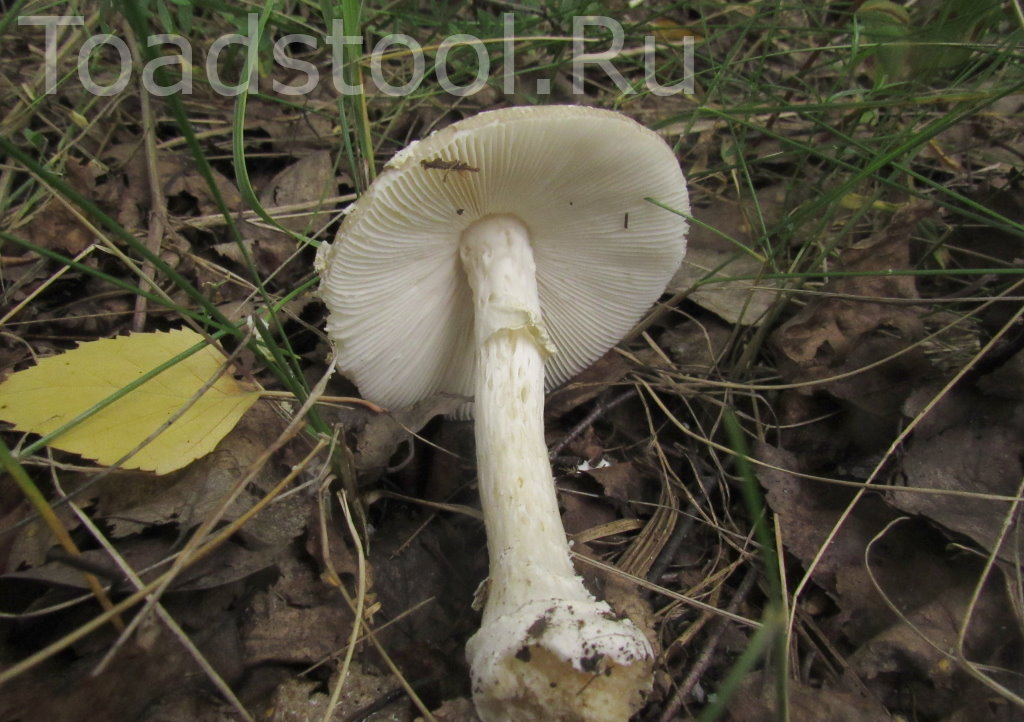
So you can see that the ribbed edges of the cap are an illusion; before us is by no means a "float". The ring, albeit not very pronounced, is quite in its place, there are no remnants of the Volvo as such (a few rings do not count), and in general the mushroom, although not large, somehow does not fit into frivolous "pushers".

On the young hat, the remains of the coverlet are clearly visible, but the very first good rain may not leave a trace of them, and Elias's rare fly agaric from above will be indistinguishable from the banal yellowing float, which there, in the birches, darkness and darkness.
Fly agaric (Amanita franchetii)
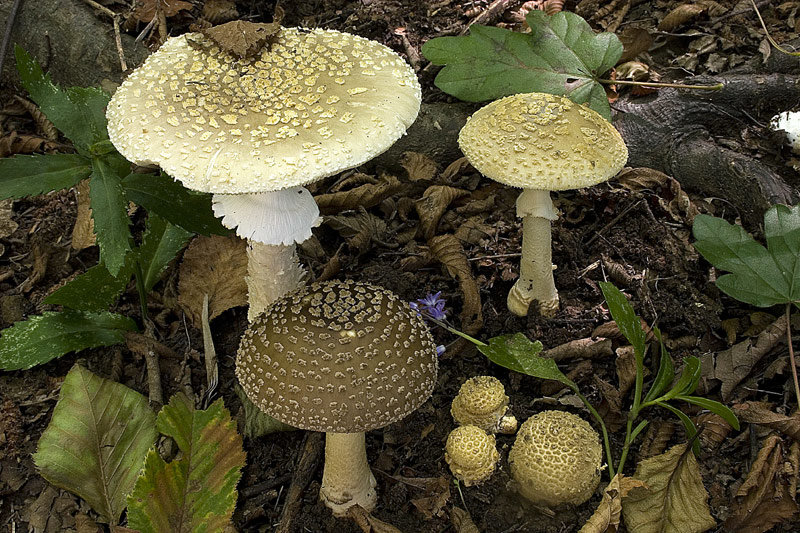
Amanita franchetii is a mushroom belonging to the Amanitov family, genus Amanita.
External description of the mushroom
Rough fly agaric (Amanita franchetii) is a fruiting body with a semi-circular, and later - a spread cap and a whitish leg with yellowish flakes on its surface.
The diameter of the cap of this flu is from 4 to 9 cm. It is quite fleshy, has a smooth edge, is covered with a yellowish or olive skin, and itself has a brownish-gray color. The mushroom pulp itself is white, but when damaged and cut it becomes yellowish, exudes a pleasant aroma, and has a good taste.
The leg of the mushroom has a slightly thickened bottom, tapers upward, initially dense, but gradually becomes hollow. The height of the mushroom leg is from 4 to 8 cm, and the diameter is from 1 to 2 cm. The hymenophore part, located on the inner side of the mushroom cap, is represented by the lamellar type. The plates can be located in relation to the leg freely, or slightly adhere to it with a tooth. They are often located, characterized by expansion in their middle part, white. With age, their color changes to yellowish. These plates contain white spore powder.
The remains of the bedspread are represented by a weakly expressed Volvo, which is distinguished by its looseness and dense accretion. They are grayish-yellow in color. The mushroom ring is characterized by an uneven edge, the presence of yellow flakes on its whitish surface.
Habitat and fruiting period
Amanita franchetii grows in mixed and deciduous forests, prefers to settle under oaks, hornbeams and beeches. Fruit bodies are found in groups and grow on the soil.
The fungus of the described species is widespread in Europe, in the Caucasus, Central Asia, Vietnam, Kazakhstan, Japan, North Africa and North America. Amanita muscaria fruiting occurs most actively during the period from July to October.
Edibility
There is no reliable information about the edibility of the mushroom. In many literary sources, it is designated as an inedible and poisonous mushroom, so it is not recommended to eat it.
Similar species, distinctive features from them
The rare distribution of the rough fly agaric and the specific signs of the fruiting body make this type of mushroom unlike other varieties of mushrooms from the genus Amanita.
Interesting information about the rough fly agaric
At this point in time, it is not reliably known whether the rough fly agaric is an inedible or, conversely, an edible mushroom. Some of the authors of books on mycology and mushroom science note that this type of mushroom is inedible, or nothing is known for certain about its edibility. Other scientists say that the fruiting bodies of the rough fly agaric are not only completely edible, but also have a pleasant aroma and taste.
In 1986, the scientist-researcher D. Jenkins discovered the fact that in the Persona herbarium the scabies are represented by the type Lepiota aspera. In addition, E. Fries created a description of the mushroom in 1821, in which there was no indication of the yellowish tint of the Volvo. All these data made it possible to classify the fungus Amanita aspera as a homotypic synonym for the fungus Lepiota aspera, and as a heterotypic synonym for the fungus of the species Amanita franchetii.
Amanita elias
Amanita eliae ((Quel.) Pers.)
Amanita family - Amanitaceae
Habitats and biology
Inhabits deciduous and mixed forests with the participation of oak (as well as beech and hornbeam), birch, hazel, pine). In the area, found in a mixed forest in the ancient valley of the river. Oki. Forms mycorrhiza, mainly with deciduous species. Fruiting bodies are formed as single specimens or in small groups, in August-September, not annually.
Description of the species
The fruit body is medium in size, consists of a stem and a cap with a lamellar hymenophore. The cap is 4-8 cm in diameter, young, almost spherical, then semicircular with a blunt tubercle, umbrella-shaped, often slightly oblique, ribbed-striped edge. The color is initially light beige, then yellowish-nutty, sometimes with a pinkish tinge. The surface is smooth, slightly sticky, with small white flakes from the remains of the common bedspread. The plates are whitish, free. Stem 7-12 x 1-1.5 cm, relatively long and thin, often curved, thickened at the base, whitish with small flakes that darken with age. The ring is thin, filmy, easily torn, sometimes disappearing with age. Volvo is fragile, weakly expressed, reduced to several belts from fragments of a common veil. The pulp is white, without any special smell or taste. Spore powder white, spores broadly ellipsoid 10.5-13 (15) x 6.5-9 microns. Edible is unknown.
Spreading
European-Mediterranean species, rare throughout its range. There is little information about its distribution in Russia; it is also known from the Kaluga and Rostov regions and the northwestern part of the Caucasus. In the Tula region, it is apparently located on the northeastern border of the range; found in the Belevsky district.
Necessary security measures
Monitoring the status of a known population. Taking under the territorial protection of the only habitat of the species. Search for new localities of the species in the mixed forests of the Oka strip and, if necessary, taking the discovered populations under protection.
Sources of information
1. Studies ..., 2008; 2. Moser, 1978; 3. Courtecuisse, Duhem, 1995; 4. Knudsen, H. & J. Vesterholt, 2008; 5. Sionova, 2009; 6. Vychepan SL, unpublished data; 7. Sopina, 2001; information of the author of the essay.
Symptoms of poisoning with mushroom poison, first and urgent aid

The red fly agaric is high in toxic chemicals that can poison:
- ibotenic acid and its derivative muscimol. They are able to freely penetrate the blood-brain barrier to the tissues of the brain. They act as psychomimetics (hallucinogens). Ibotenic acid - its crystallization takes place in anhydrous form or in the form of a monohydrate, the substance is highly neurotoxic, causing the death of brain neurons.
- muscarine. Causes a decrease in cardiac output and dilatation of blood vessels, a drop in blood pressure, nausea, vomiting, increased salivation, bronchospasm.
- muscimol. Refers to psychoactive toxins, mood stimulants, has a dissociative, sedative-hypnotic effect. The molecular formula of muscimole is C4H6N2O2.
Fly agaric poisoning is rare, but most often they are caused by misuse of funds based on it for therapeutic purposes. The first signs of intoxication begin to appear within a few hours after eating and carry a certain danger:
- weakness;
- nausea, vomiting;
- dizziness and headache;
- temperature increase;
- visual disturbances;
- bradycardia;
- delusions and hallucinations.
Death is extremely rare, but the victim needs emergency medical attention:
- Drink plenty of fluids before the arrival of doctors (at least 1 liter).
- Inducing vomiting. The stomach should be flushed until the vomit becomes transparent.
- Reception of absorbents: activated carbon, Enterosgel, Smekty, Polisorba. These drugs interfere with the absorption of toxins by the intestines.
From the point of view of toxicology, atropine is an effective antidote for mushroom poisoning. The volume, feasibility of taking it is determined only by a doctor. Self-medication for poisoning can be harmful to health.
Contraindications for use
The absolute contraindications for taking any drugs based on the red fly agaric include pregnancy and breastfeeding, and others. The use of this fruiting body for children is strictly prohibited.
When using products based on red fly agaric, you should take a particularly responsible approach to dosages, observe personal hygiene: work with gloves, wash your hands thoroughly with soap after contact with drugs. Make sure that toxic agents do not get on the mucous membrane and open wounds, on places with affected skin.
Psychotropic and toxic properties of substances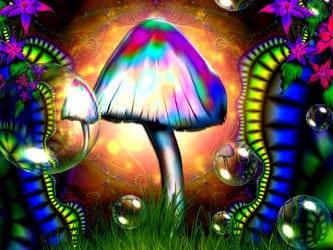
The use of red mushrooms for food has long been practiced in the culture and life of many peoples. For example, the Chukchi took decoctions and mushroom powder as an intoxicating remedy, they stored it in large quantities for the winter. After the use of these drugs, hallucinations arose, attacks of joy and anger alternated, objects were forked, sounds began to be heard, and colored visions appeared. The state is similar to entering a trance, it was often used by shamans during rituals.
The ancient Hindus prepared the so-called sacred drink "soma" from the red fly agaric. In the descriptions there is such a characteristic of the drink: "a child of the earth of red color without leaves, flowers and fruits, with a head resembling an eye", which is quite consistent with the appearance of the fly agaric.
There is information that the Yakuts, Yukaghirs and Ugrians could cook them. Moreover, in Western Siberia, fly agarics ate raw or drank a decoction of dried mushrooms and used it as a psychedelic. But most often they preferred to prepare mushrooms, they were dried, bite off a piece and washed down with water.
It is believed that during prolonged digestion, the toxic properties of the fly agaric are lost, it becomes less dangerous. But this opinion has not been scientifically confirmed until now.
Similar species
The deadly white fly agaric bears similarities to some edible mushrooms:
Unlike the fly agaric, it does not have an unpleasant odor and ring-shaped growth on the leg.
It also differs from the fly agaric in the absence of smell, in addition, the stem of the umbrella is stronger and more fibrous.
 1-White float 2-White umbrella
1-White float 2-White umbrella
As the name suggests, this mushroom has a slimy surface, unlike the white fly agaric, which has a predominantly dry surface. Volvariella has a grayish cap color, not white. Does not have a "skirt" on the leg. And finally, it also does not emit unpleasant odors.
In addition to edible twins, the spring fly agaric is similar to this poisonous mushroom. Some sources even note that this fly agaric is a subspecies of the pale toadstool. At least the degree of toxicity they have is the same. Both mushrooms are deadly. There are still differences between the toadstool and the fly agaric: the toadstool is pale not quite white, its color is closer to light yellow-green.
 1-Volvariella mucous head 2-Toadstool
1-Volvariella mucous head 2-Toadstool
Areas of growth of Vittadini's fly agarics.
This species is common in some southeastern and southern regions of Russia. These mushrooms grow in the reserved steppes of Stavropol, Saratov region, Ukraine, Kyrgyzstan, Armenia.
Amanita muscaria Vittadini grow in European countries with relatively warm climates: from Italy to the British Isles. Also, these mushrooms are found in Asia: in the Far East, in the Caucasus, in Central Asia, Israel. Amanita Vittadini also lives in Africa, South and North America.

These mushrooms grow in the steppes, forest-steppes, and next to forest belts. In southern Europe, this species is considered extremely rare, which may be why it is called poisonous. Fruiting of these fly agarics occurs from April to October. These mushrooms can settle on various soils.
The similarity of the Vittadini fly agarics with other mushrooms.
The fly agaric Vittadini bears an external resemblance to the white fly agaric, which is a deadly poisonous species.

Also, the fly agaric Vittadini can be confused with a white umbrella, but there is no danger in this.
Evaluation of the nutritional qualities of the Vittadini fly agarics.
Young fly agarics Vittadini are considered edible. Their pulp has a pleasant smell and taste. But these are very rare mushrooms, so you should refrain from collecting them. In addition, there is a risk of confusing this conditionally edible mushroom with a deadly poisonous one.
Classification of fly agarics by Vittadini.
Some mycologists believe that the Vittadini fly agarics have traits of both the Amanita genus and the Lepiota genus, in this regard, they include these mushrooms in the Lepidella genus.

A feature of the Vittadini fly agarics.
Interestingly, when dry, the young fruiting bodies of the Amanita Vittadini do not lose their vitality. During a drought, their development temporarily stops, and when heavy rains fall in the steppe, development continues again.
Related species of the Vittadini fly agaric.
Amanita Battarra is also considered a conditionally edible species. The shape of its cap can be ovoid, bell-shaped and convex. The edges are uneven, ribbed. The cap is thin in structure. Her color is yellow-olive or gray-brown. The surface of the cap is bare, but traces of a common veil are often visible. The leg is yellow-brown, with scales.
Amanita Battarra bears fruit from July to October. This type of fly agaric grows in mixed and coniferous forests. They settle mainly on acidic soils.

Amanita Elias is also conditionally edible. The shape of his cap varies from ovoid to prostrate with a central tubercle. It can be whitish, pink, beige and brown in color. There are blanket particles on its surface. The leg can bend slightly, its base is widened. There is a whitish, hanging ring on the stem.
Amanita muscaria of Elias are mainly found in the Mediterranean regions. This species is rare in our country. You can find them in mixed and deciduous forests, under nuts, beeches, hornbeams and beeches. Fruiting is observed from August to September. These mushrooms do not appear every year.
Amanita Elias: photo and description
| Name: | Amanita Elias |
| Latin name: | Amanita eliae |
| Type of: | Conditionally edible |
| Specifications: | |
| Systematics: |
|
Amanita Elias is a rather rare variety of mushrooms, unique in that it does not form fruiting bodies every year. Russian mushroom pickers know little about him, since they practically did not meet with him.

Description of the fly agaric Elias
Like all representatives of the Mukhomorovs, this mushroom has a fruiting body, consisting of their legs and caps. The upper part is lamellar, the elements are thin, free, white in color.
Description of the hat
The cap is medium in size, it does not exceed 10 cm in diameter. In young specimens, it is more like an egg in shape; as it grows, it changes shape to convex. Sometimes a tubercle forms in the middle.The color can be different. There are specimens with a pink hat and even a brown one. There are scars on the edges, they can bend up. If the weather is humid, it becomes slimy to the touch.
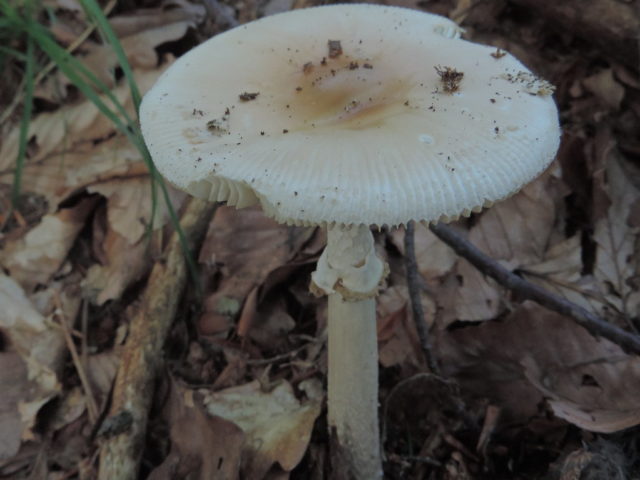 Leg description
Leg description
The leg is typical for representatives of this genus: flat, thin, high, resembling a cylinder in shape. It can reach from 10 to 12 cm, sometimes it has a bend. At the base it is slightly wider, there is a ring hanging down and having a white color.
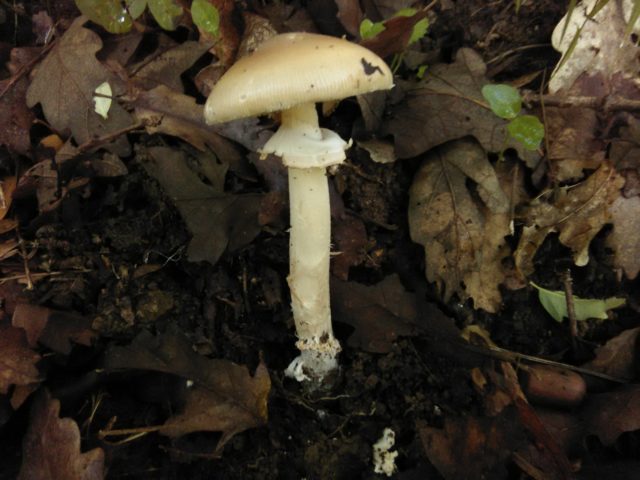
Where and how it grows
Amanita Elias grows in regions with a Mediterranean climate. It is found in Europe, but in Russia it is very difficult to find it. It is considered a rare representative of the Mukhomorovs. Grows in mixed and deciduous forests, prefers the neighborhood of hornbeam, oak or walnut, as well as beech. Can live near eucalyptus trees.
Amanita Elias is edible or poisonous
Belongs to the group of conditionally edible. The pulp is dense, but due to the unexpressed taste and almost complete absence of smell, it has no nutritional value. Mushrooms appear at the very end of summer and at the beginning of autumn.
Doubles and their differences
This species has quite a few siblings:
- The float is white. It is conditionally edible, does not have a ring. At the bottom there is the remnant of a Volvo.
- The umbrella is white. Edible look. The difference is the brownish shade of the cap, it is covered with scales.
- The umbrella is thin. Also from the edible group. It has a characteristic sharp tubercle on top, as well as scales all over its surface.
Conclusion
Amanita Elias is not a toxic mushroom, but it shouldn't be harvested. He does not have a bright taste, besides, he has many poisonous counterparts that can cause serious poisoning.

